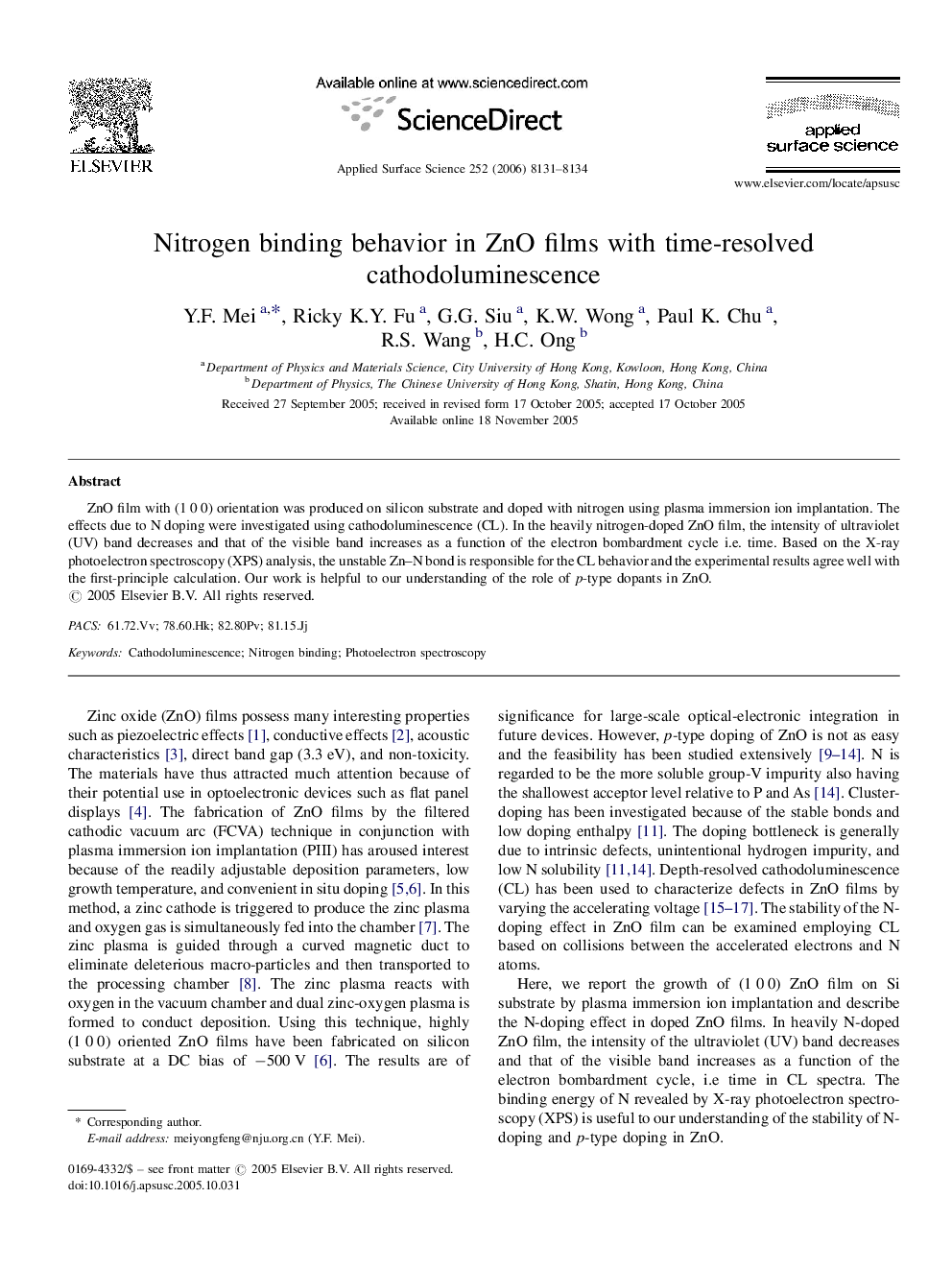| Article ID | Journal | Published Year | Pages | File Type |
|---|---|---|---|---|
| 5366189 | Applied Surface Science | 2006 | 4 Pages |
Abstract
ZnO film with (1Â 0Â 0) orientation was produced on silicon substrate and doped with nitrogen using plasma immersion ion implantation. The effects due to N doping were investigated using cathodoluminescence (CL). In the heavily nitrogen-doped ZnO film, the intensity of ultraviolet (UV) band decreases and that of the visible band increases as a function of the electron bombardment cycle i.e. time. Based on the X-ray photoelectron spectroscopy (XPS) analysis, the unstable ZnN bond is responsible for the CL behavior and the experimental results agree well with the first-principle calculation. Our work is helpful to our understanding of the role of p-type dopants in ZnO.
Related Topics
Physical Sciences and Engineering
Chemistry
Physical and Theoretical Chemistry
Authors
Y.F. Mei, Ricky K.Y. Fu, G.G. Siu, K.W. Wong, Paul K. Chu, R.S. Wang, H.C. Ong,
